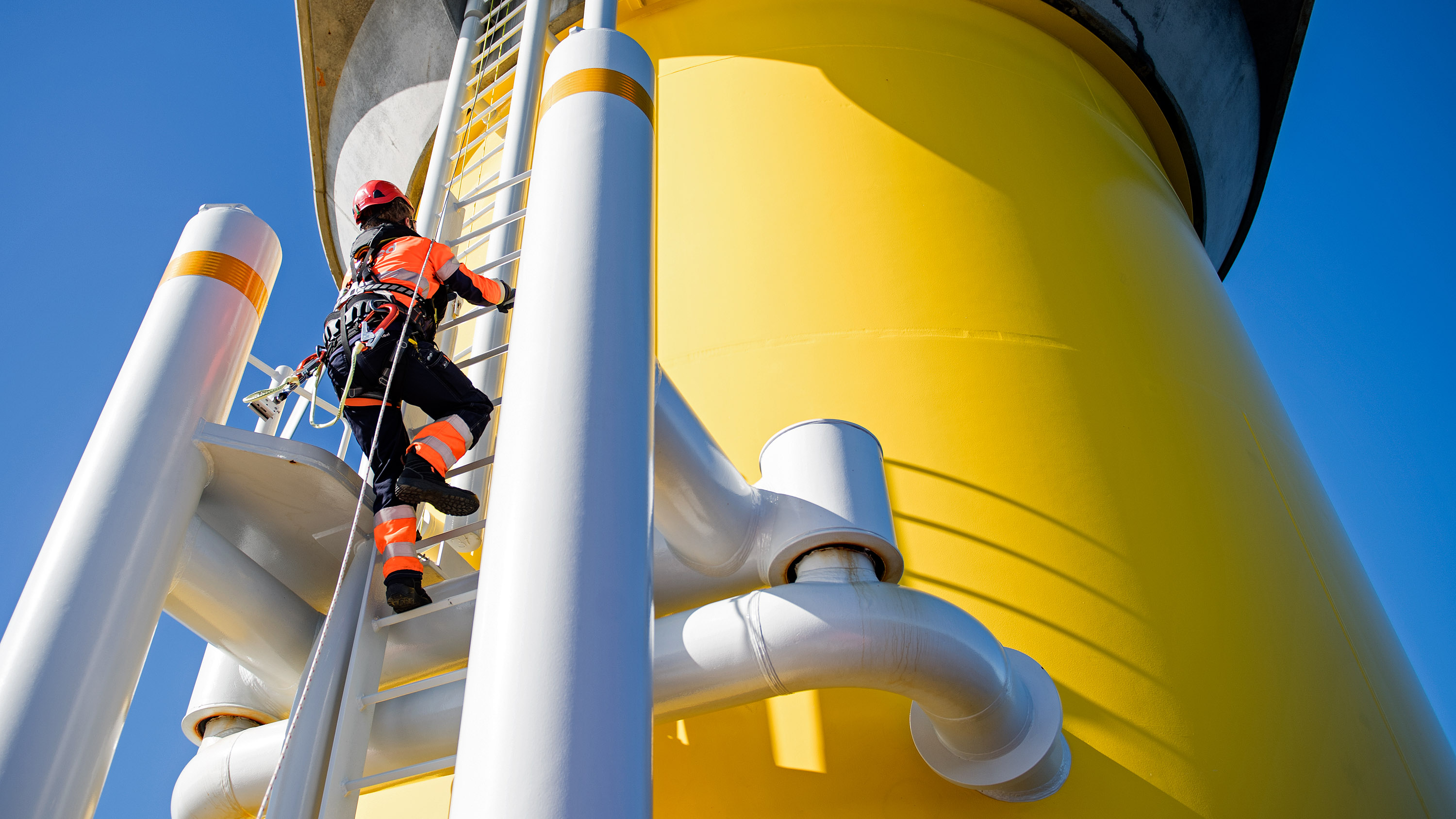Explore the 2023 list of 15 Climate Tech Companies to Watch.
Offshore wind power has tremendous potential to help the world meet its climate goals. Former fossil-fuel company Ørsted is leading the charge to unlock that potential by building massive offshore wind farms in Europe and installing some of the first turbines in US waters.
Intro
Clean-energy company Ørsted is helping offshore wind reach the gigawatt scales needed to make a dent in global carbon emissions.
This story is only available to subscribers.
Don’t settle for half the story.
Get paywall-free access to technology news for the here and now.
Subscribe now
Already a subscriber?
Sign in
Wind is a key source of renewable power, but densely populated coastlines often lack the physical space and blustery weather needed to take advantage of it. The fiercer and more reliable winds blowing farther offshore are an attractive alternative—yet many countries, facing high costs and slow permitting processes, are struggling to build wind power facilities there.
Ørsted is trying to change that. For more than two decades, the company has propelled the European offshore-wind market forward by investing in commercial-scale projects and the supply chains needed to support them. Today, Ørsted operates industrial-scale offshore wind farms in Denmark, Germany, and the UK, including Europe’s first two gigawatt-scale facilities. The company is now aggressively expanding its presence in the US, with initial large-scale projects in development off New York and New Jersey, as well as in the Asia-Pacific region.
Ørsted is a rare example of an energy company that transitioned its core business from fossil fuels to renewables. In 2008, fossil-fuel plants accounted for 85% of Ørsted’s heat and power generation, while renewable energy accounted for 15%. By 2019, Ørsted had flipped that ratio. Today renewables make up 91% of its energy portfolio.
Key indicators
- Industry: Renewable energy
- Founded: 2006
- Headquarters: Fredericia, Denmark
- Notable fact: Ørsted used to be DONG Energy, short for Danish Oil and Natural Gas. To reflect its shift toward renewable power generation, in 2017 the company renamed itself after Hans Christian Ørsted, a Danish physicist who helped discover electromagnetism.
Potential for impact
Ørsted has built more offshore wind farms than any other company in the world. It also operates land-based wind and solar farms, battery storage facilities, and biomass power plants. With ambitious growth plans, the company intends to play a key role in replacing fossil-fuel power plants with renewable energy worldwide.
As of 2022, Ørsted had installed 15.1 gigawatts (GW) of renewable capacity worldwide—enough to power 12 million US homes. By 2030, it hopes to reach 30 GWs of offshore wind and more than triple its installed renewable energy generation capacity overall. That is the same amount of offshore wind capacity the Biden administration wants to build nationwide by 2030.
Caveats
Ørsted faces some headwinds, however. Today, the offshore wind industry is under economic pressure from supply chain constraints, inflation, and rising interest rates. Several of Ørsted’s projects—including Hornsea 3, a nearly 3-GW offshore wind farm in the UK, and a planned wind farm off of Long Island, New York—may need additional governmental support to remain viable.
Amid Europe’s energy crisis last year, Ørsted faced another dilemma: pressure to keep burning fossil fuels. Following the Russian invasion of Ukraine, Danish authorities ordered Ørsted to continue or resume operation of three coal- and oil-fired power plants to secure the nation’s electricity supply. As a result, Ørsted was unable to reach its goal of generating 95% of its energy from renewable sources by 2023.
When
Ørsted has about 12 GW of offshore wind capacity installed or under construction. To meet its goal of 30 GW of offshore wind by 2030, the company plans to install 2 GW of new capacity annually until 2025 and 3 GW of new capacity annually between 2025 and 2030.
A pipeline of offshore wind projects in Europe, the US, and the Asia-Pacific region will help Ørsted meet its targets. In addition to Hornsea 3, Ørsted is helping develop a series of gigawatt-scale offshore wind farms in Poland, which are expected online in the mid-2020s. In the US, Ørsted is constructing New York’s first offshore wind farm, which is on track to begin producing power later this year. In Taiwan, the company is building a series of offshore wind farms over the coming years. Once complete, these Taiwanese projects will collectively represent nearly 2 GW of capacity.
Next steps
Through partnerships with other energy developers, Ørsted is taking its first steps toward constructing floating offshore wind turbines, an early-stage technology that could one day allow the industry to move into much deeper waters, including those off the US West Coast.
The company is also making significant investments in the nascent green-fuels market. Renewably generated hydrogen and other “e-fuels” could help green the fossil fuel-intensive shipping industry, which accounted for nearly 3% of global emissions in 2018. Last year, Ørsted signed a letter of intent to supply the shipping giant Maersk with 300,000 tons of e-methanol a year for a future fleet of low-carbon vessels.
Explore the 2023 list of 15 Climate Tech Companies to Watch.
